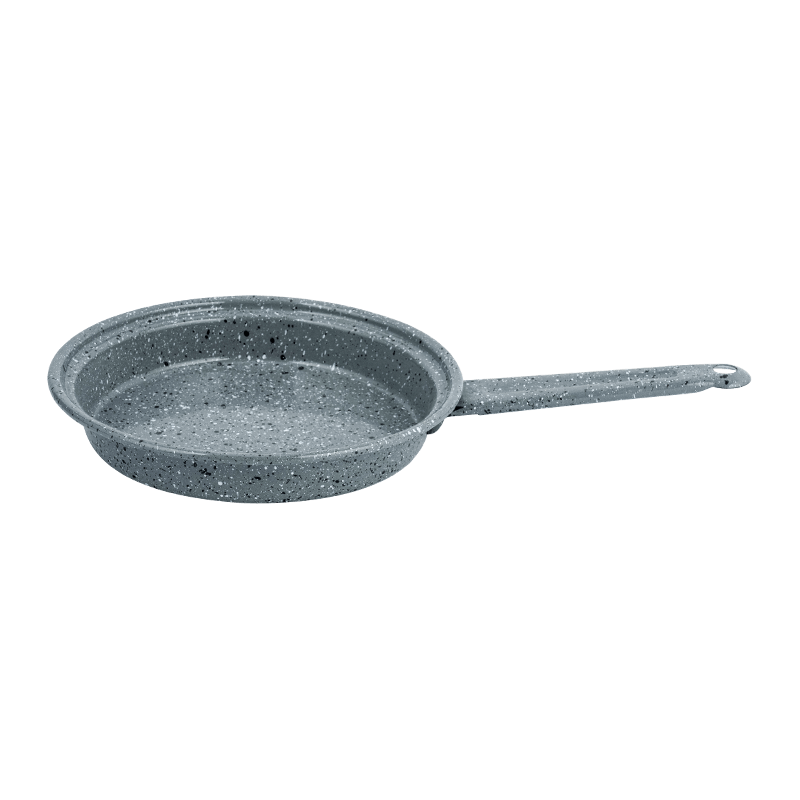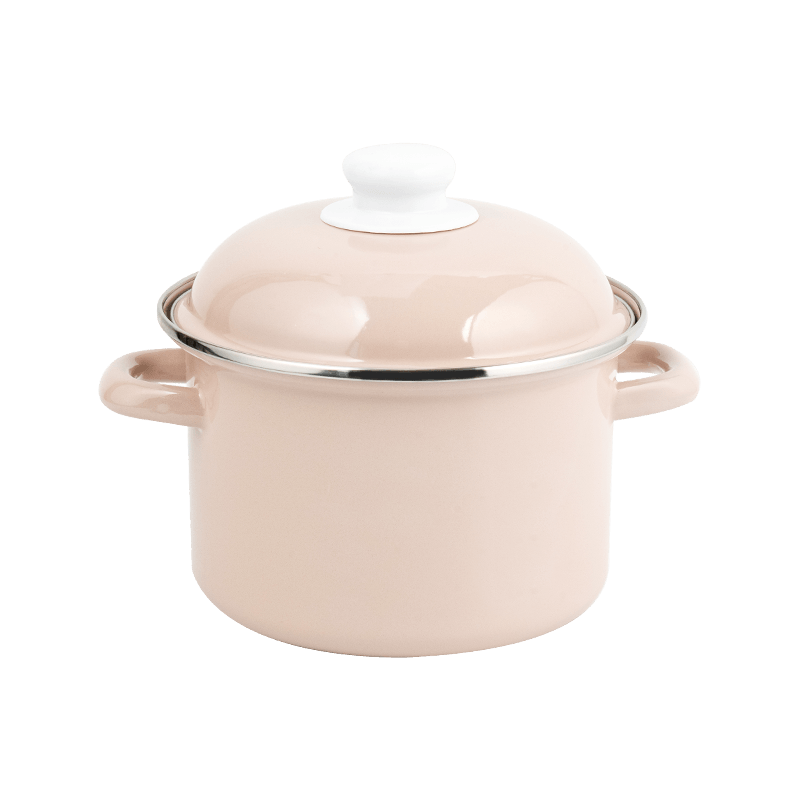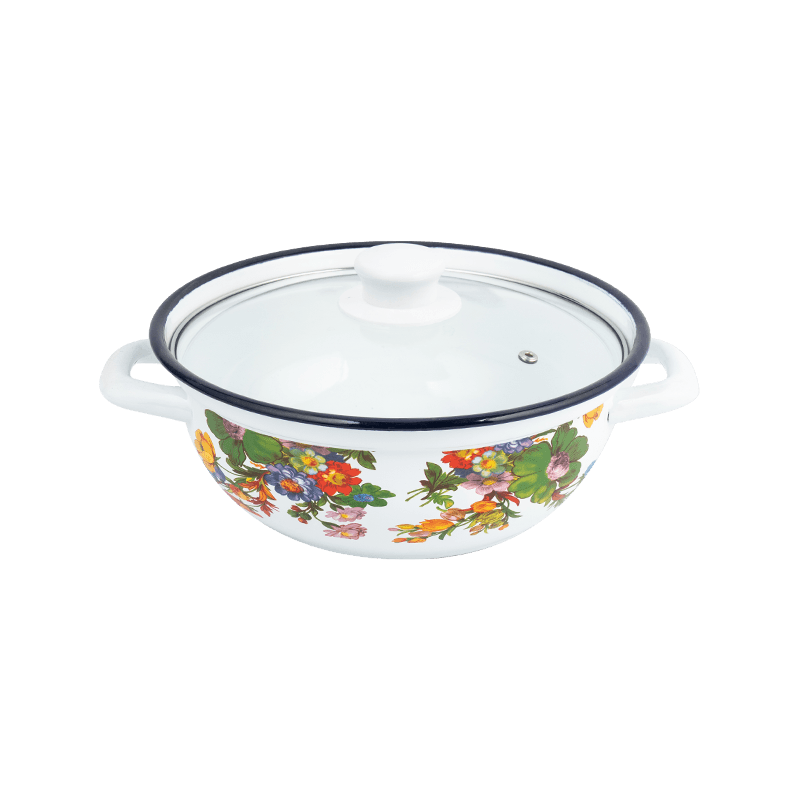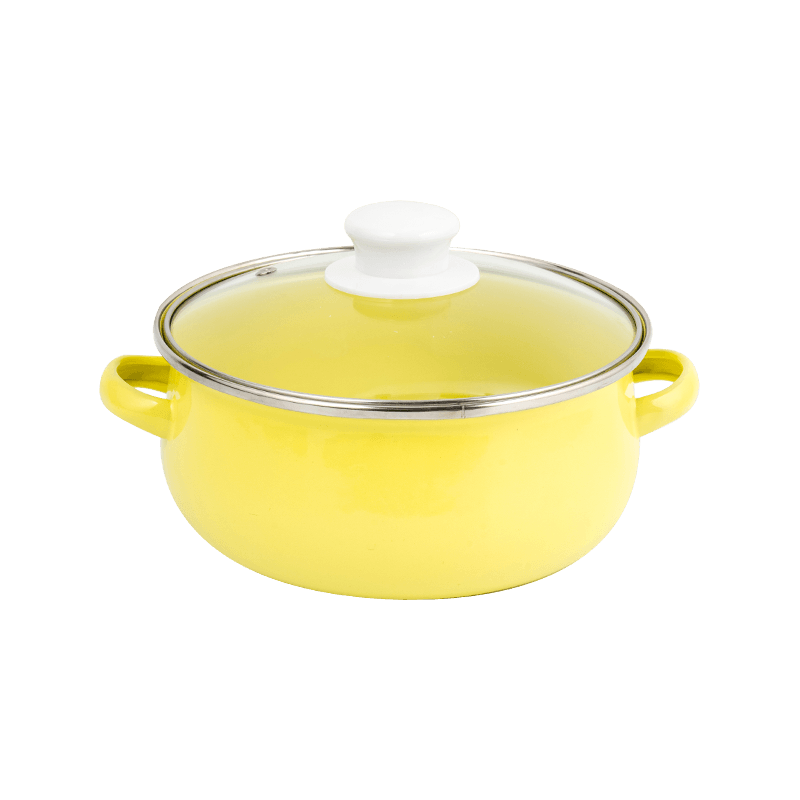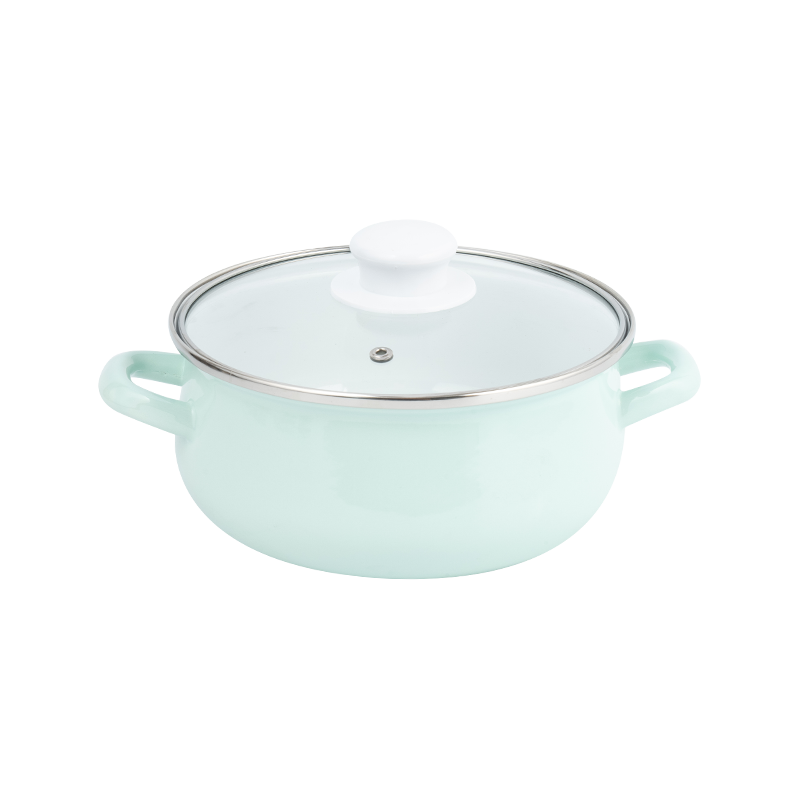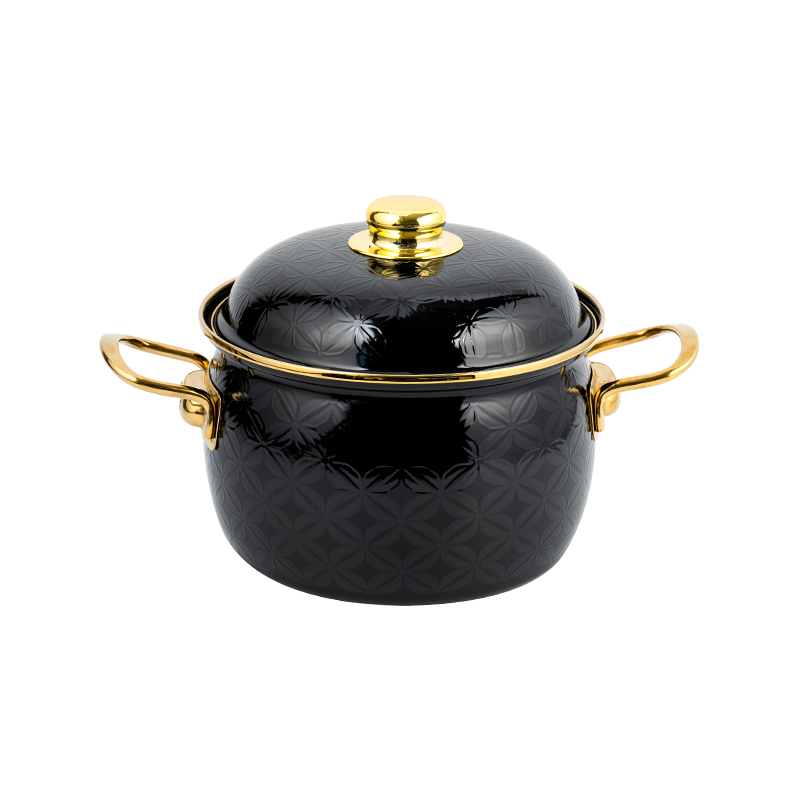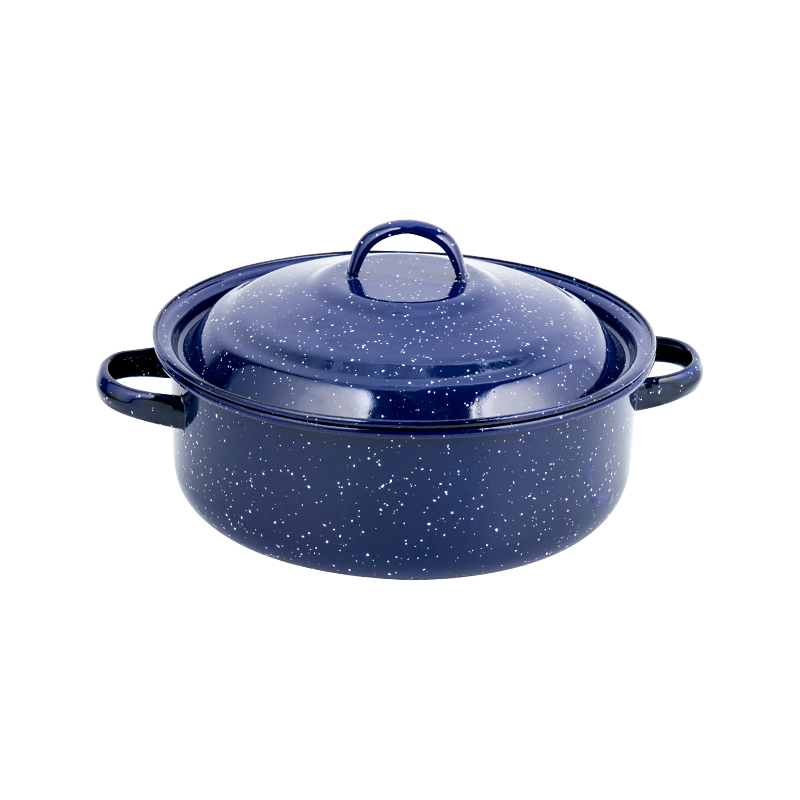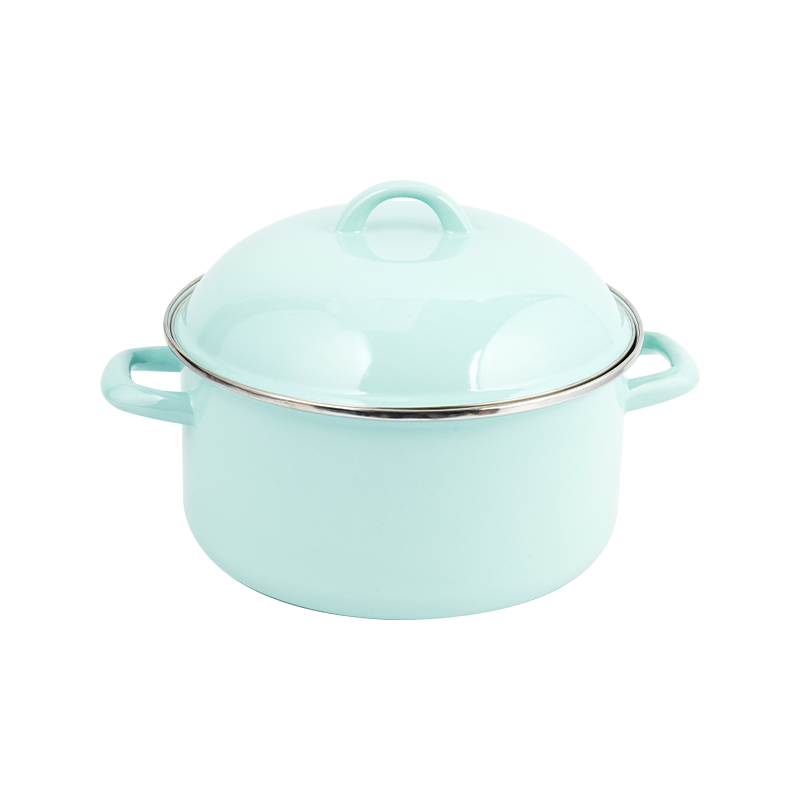For home cooks investing in durable, versatile cookware, the choice between a double handle enamel pot and a traditional cast iron pot is a common dilemma. While both excel at tasks like braising, stewing, and baking, their fundamental differences in construction, performance, and care create distinct user experiences. Understanding these distinctions is key to selecting the right tool for your kitchen.
1. Core Construction: Material Matters
- Double Handle Enamel Pot: At its heart, this is typically crafted from carbon steel or sometimes cast iron. This core is then coated in a layer of vitreous enamel, essentially a type of glass fused onto the metal at high temperatures. The defining "double handle" design features two looped handles on opposite sides, facilitating easier lifting and maneuvering, especially when the pot is heavy with food.
- Cast Iron Pot: Made entirely from cast iron, a ferrous alloy poured into molds. Traditional cast iron pots have a single long handle (the "helper handle" is smaller and opposite the main handle, not typically considered a "double handle" setup). The cooking surface is the raw cast iron itself, which requires seasoning (a layer of polymerized oil) for non-stick properties and rust prevention.
2. Performance & Cooking Characteristics
- Heat Distribution & Retention:
- Cast Iron: Excellent heat retention. Once heated, it holds temperature very steadily, making it superb for searing and maintaining a consistent simmer or braise. However, it heats relatively slowly and can have minor hot spots.
- Enamel Pot (Steel Core): Heats up significantly faster than cast iron due to the thinner steel core. Heat distribution is generally good, though not quite as exceptional at retention as solid cast iron. The enamel coating itself doesn't enhance heating properties.
- Reactivity & Cooking Versatility:
- Cast Iron: The seasoned surface is non-reactive once properly seasoned. However, cooking highly acidic foods (tomatoes, vinegar, wine) for prolonged periods can potentially break down the seasoning layer and impart a metallic taste or damage the seasoning. Requires careful maintenance after acidic cooks.
- Enamel Pot: The glass-like enamel coating is completely non-reactive and non-porous. This makes it the ideal choice for long-simmering acidic dishes like tomato sauce, chili, or coq au vin, without risk of metallic flavors or damaging the pot's surface. It excels where acidity is key.
- Non-Stick Properties:
- Cast Iron: Develops excellent natural non-stick properties through proper seasoning and use. Improves over time.
- Enamel Pot: The enamel surface is naturally smooth and somewhat non-stick, especially when new or well-maintained. However, it generally doesn't achieve the same level of effortless release as a well-seasoned cast iron surface, particularly for delicate items like eggs or fish. Food can stick more readily, especially if heat is too high.
3. Maintenance & Durability
- Cleaning:
- Cast Iron: Requires specific care. Avoid soap traditionally (though mild soap is often considered acceptable now on well-seasoned pans), never soak, and must be dried immediately and thoroughly to prevent rust. Re-oiling after cleaning is usually necessary.
- Enamel Pot: Much simpler. Can be washed with soap and water. Soaking is generally acceptable (check manufacturer guidelines). Drying is important but less critical than with raw cast iron to prevent rust of the core (though chips are the bigger enamel risk).
- Durability Concerns:
- Cast Iron: Extremely durable and virtually indestructible under normal use. Can last generations. Vulnerable to thermal shock (sudden extreme temperature changes) which can cause cracking. Rust is the primary enemy if not cared for.
- Enamel Pot: The enamel coating, while tough, is susceptible to chipping or cracking if subjected to impact (e.g., dropping, hitting with metal utensils) or severe thermal shock. Chips expose the underlying metal, which can then rust and compromise the pot's integrity. Requires more careful handling than raw cast iron. The steel core can also dent.
4. Practical Considerations
- Weight: Both are heavy, but traditional cast iron pots are generally heavier than enameled steel pots of similar size. The double handles on the enamel pot significantly aid in managing its weight.
- Aesthetics: Enamel pots come in a wide variety of colors, offering more decorative kitchen appeal. Cast iron has a classic, rustic look.
- Cost: High-quality enameled cookware (especially on a cast iron core) is typically more expensive than traditional raw cast iron pots.
Choosing Your Champion: A Quick Reference
| Feature | Double Handle Enamel Pot (Steel Core) | Traditional Cast Iron Pot |
|---|---|---|
| Core Material | Carbon Steel (or Cast Iron) + Enamel | Solid Cast Iron |
| Surface | Non-reactive Vitreous Enamel | Seasoned Cast Iron |
| Best For Acids | Excellent (Tomato sauce, wine braises) | Good (but can damage seasoning) |
| Non-Stick | Moderate (smooth but can stick) | Excellent (when well-seasoned) |
| Heat Up Speed | Faster | Slower |
| Heat Retention | Good | Excellent |
| Cleaning | Easier (Soap & water ok) | More Complex (Seasoning care) |
| Durability Risk | Chipping/Cracking Enamel | Rust (if unseasoned), Cracking |
| Weight (Typical) | Heavy (but handles help) | Very Heavy |
| Maintenance | Avoid chips/thermal shock | Seasoning, Prevent Rust |
The Verdict
The "better" pot depends entirely on your cooking habits and priorities.
- Choose a Double Handle Enamel Pot if: You frequently cook acidic dishes, prioritize easier cleaning and maintenance, appreciate faster heating and a non-reactive surface, want aesthetic color options, and value the maneuverability of double handles. Be prepared to handle it carefully to avoid chipping.
- Choose a Cast Iron Pot if: You prioritize superior heat retention for searing and steady simmering, desire outstanding natural non-stick properties that improve with time, value legendary durability (avoiding chips), and don't mind a more involved seasoning and cleaning routine. Its heft and single handle design require careful handling.
Ultimately, both represent excellent, long-lasting investments for serious home cooks. Recognizing their inherent differences allows you to leverage each pot's unique strengths, ensuring delicious results tailored to your culinary style.

 English
English 中文简体
中文简体




